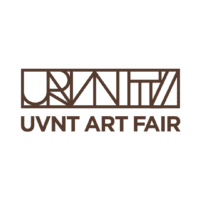Art Transport Is a Delicate Task Requiring Attention to Multiple Factors to Ensure Pieces Arrive Damage-Free
Artworks—whether paintings, sculptures, or more complex installations—are often fragile and of high value, making logistics for their transportation a high-risk operation if not handled correctly. Below, we offer a complete guide for ensuring safe logistics when transporting artworks, applicable for individual artists, galleries, and museums.
Selecting the Right Transport Method
The first step toward secure logistics is selecting the most suitable transport method based on the artwork’s characteristics. The main options include:
– Ground Transport: Ideal for short to mid-range distances, often within the same country or continent. Specialized ground transports are equipped with vehicles featuring suspension and temperature control systems, which are essential for maintaining the integrity of the pieces during transit.
– Air Transport: For long distances or international shipping, air transport is typically the fastest and safest option. Specialized art carriers in air transport ensure that pieces travel under controlled temperature and humidity conditions.
– Sea Transport: While more economical for large volumes, sea transport is less common for extremely valuable art pieces due to the prolonged transit time and potential environmental condition changes along the route. However, it can be suitable for international exhibitions.
Specialized Packaging
Packaging is one of the most critical aspects of art logistics. Using high-quality materials and proper techniques can prevent damage from shocks, vibrations, or unstable environmental conditions. Key recommendations for safe packaging include:
– Custom Wooden Crates: For large or extremely fragile works, custom wooden crates provide added protection against impact. They should include internal padding to keep the piece immobilized during transport.
– Padding Materials: Using materials like polyethylene foam, anti-static bubble wrap, or air cushions is essential for dampening movement or vibrations. These materials help distribute any impact evenly.
– Safety Glass or Acrylic: For framed artworks with glass, it is advisable to use safety glass or high-quality acrylic, which is lighter and more resistant to breakage.
Climate Control and Environmental Conditions
One of the greatest threats to the preservation of artworks during transport is fluctuations in temperature and humidity. Drastic changes in environmental conditions can cause irreversible damage, especially to pieces made from organic materials like wood or canvas.
To mitigate these risks, it is crucial to:
– Install Temperature and Humidity Monitoring Systems: Devices that monitor real-time conditions inside transport crates can alert handlers to critical changes requiring intervention.
– Temperature-Controlled Vehicles and Containers: Ensure that the vehicles or containers used in transportation are equipped with climate control systems. Galleries and museums typically maintain stable temperatures around 20 degrees Celsius to prevent warping or discoloration of artworks.
Specialized Insurance
A key aspect of safe logistics is having specialized insurance for transporting artworks. It is essential that the policy covers all possible scenarios, from damage during transport to theft or natural disasters. Additionally, take a detailed photographic inventory before shipping to document the piece’s original condition.
Escorted Transport
When transporting invaluable pieces, such as museum masterpieces or exclusive private collections, it may be necessary to arrange for armed escort services or private security. These services add an extra layer of protection against potential theft or vandalism during transit.
Documentation and Customs Handling
For international shipments, a crucial part of the logistics process is customs handling. Inadequate documentation can cause delays or even lead to the artwork being held at customs. To avoid these issues, make sure to include:
– Certificates of authenticity and purchase invoices.
– Export and import documents.
– Cultural property transportation authorizations, if applicable.
Conclusion
Safe transportation of artworks requires meticulous planning and specialized services. From choosing the transport method to packaging and customs handling, every detail is essential to ensure that pieces arrive in perfect condition. With EnviArte, you can trust that your artwork will be transported securely and with the utmost care it deserves.


















